Something went wrong!
Hang in there while we get back on track
Best attractions in Venice
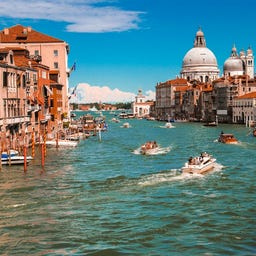
The Grand Canal is Venice's main artery, gracefully winding through the city in a large S-shape. The palaces along its banks, such as the Ca' d'Oro and the Palazzo Venier dei Leoni, are reminders of the Venetian Republic's former grandeur. Serving as the heart of Venice, the Grand Canal links many of the city's most significant landmarks.
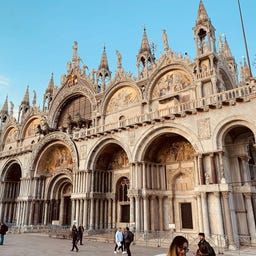
The basilica is a masterpiece of Byzantine architecture and Venice's top attraction. Known as the Church of Gold, it dazzles approximately 3 million visitors each year with over 8,000 square meters of golden mosaics and unique artworks depicting biblical scenes. A highlight is the magnificent Pala d'Oro, an altarpiece adorned with over 1,900 pearls and gemstones.
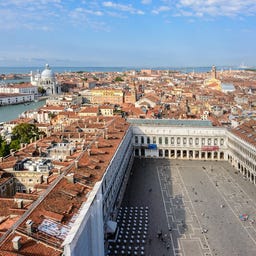
The Piazza San Marco is one of the most famous squares in the world - and rightly so. This grand piazza is surrounded by some of the most beautiful attractions of Venice, from the lavish St. Mark’s Basilica and towering Campanile to the Doge’s Palace.
As you step onto its expansive grounds, you’re walking the same stones that have hosted centuries of Venetian history, from grand processions to intimate café gatherings. Here, amid the cooing of pigeons and the distant serenade of a gondolier, you can truly feel the spirit of Venice.
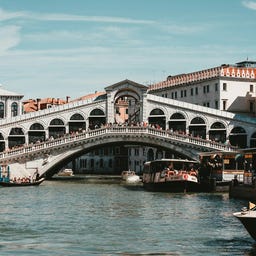
The Rialto Bridge, constructed in 1591, stands as one of Venice's most iconic landmarks. This magnificent stone bridge, adorned with elegant arches and intricate details, offers beautiful views of the Grand Canal. At the time of its construction, its bold architecture was considered so audacious that some architects predicted it would eventually collapse.
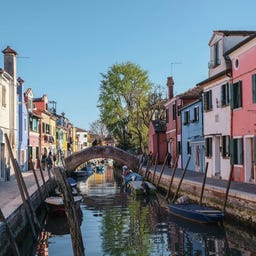
Murano is famous for its centuries-old glassmaking tradition. Visitors can watch the master glassblowers at work and admire unique artworks in numerous workshops. A visit to the Glass Museum is a must to learn about the history and production of Murano glass. Afterward, you'll view the souvenir pieces in the shops with newfound appreciation.
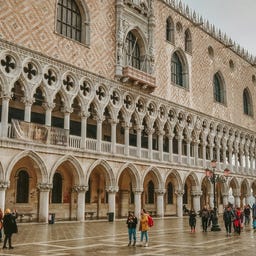
The Doge's Palace, a masterpiece of Venetian Gothic architecture built in 1340, served for centuries as the residence of the Doge and the center of political power in Venice. The palace's grandeur is evident in its magnificent halls, such as the Great Council Chamber, adorned with Tintoretto's "Il Paradiso," and the gold-encrusted Scala d'Oro, showcasing the Republic's former splendor.

The Bridge of Sighs, an enclosed limestone bridge, connects the Doge’s Palace to the old prisons. Its name comes from the sighs of prisoners who caught their last glimpse of Venice through its small windows before facing their sentences. Many of its prisoners regularly drowned during high tide without ever seeing daylight again.
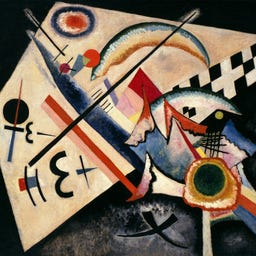
The Peggy Guggenheim Collection, situated in the Palazzo Venier dei Leoni on the Grand Canal, is one of Italy’s premier museums for 20th-century European and American art. The museum showcases Peggy Guggenheim's personal collection, featuring masterpieces by Jackson Pollock, Kadinsky, Max Ernst, and Pablo Picasso. A popular highlight of the visit is the Nasher Sculpture Garden, a serene oasis that invites visitors to pause and enjoy the art in a tranquil setting.
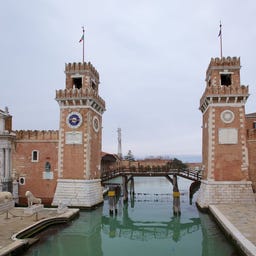
The Arsenale di Venezia, situated in the Castello district, is a quiet and often overlooked gem. Built in the 12th century, it was a vital shipyard and armory for the formidable Venetian navy, playing a crucial role in the city's maritime dominance.
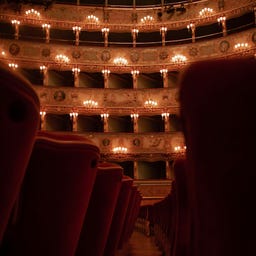
Teatro La Fenice is one of the most prestigious and opulent opera houses in the world. Despite being devastated by fires in 1836 and 1996, it was meticulously rebuilt and reopened. Hence its namesake, The Phoenix.
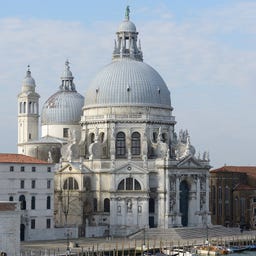
The Basilica di Santa Maria della Salute, located at the entrance to the Grand Canal, is a Baroque masterpiece built in 1630 as thanks for the end of a plague epidemic. Its impressive dome and the artistic mosaics inside captivate visitors. Notable artworks include Titian's "Marriage at Cana" and works by Tintoretto. The church is a symbolic landmark of Venice and should not be missed on any sightseeing tour.

In the magnificent Basilica di Santa Maria Gloriosa dei Frari, Venice's second-largest church, you will find an impressive collection of Venetian art from the 13th to the 16th century. This Gothic-style brick building not only houses two masterpieces by the painter Titian, but also the tombs of significant figures like Claudio Monteverdi and Antonio Canova.

The 98.6-meter-high St. Mark's Campanile, originally built as a lighthouse, now offers stunning views of Venice and even the Alps on clear days. Constructed in the 12th century, the tower has been rebuilt several times, most recently after collapsing in 1902. For the best experience, visit early in the morning or late in the afternoon to avoid the crowds and capture great photos.
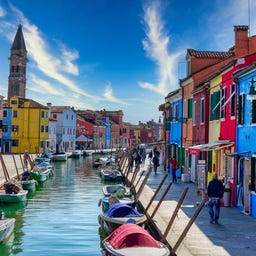
On the Venetian lagoon island of Burano, you will find a picturesque ensemble of colorful fishermen's houses, whose bright facades once served as a guide for returning sailors in the fog. The island, first mentioned in documents from the year 840, was founded by refugees from the Roman city of Altino, who fled from barbarian invasions.

In the Scuola Grande di San Rocco, a brotherhood hall completed in the 16th century in the heart of Venice, you will find one of the most significant cycles of paintings in the city. The impressive halls house over 60 masterpieces by Tintoretto, whose artistic importance is often compared to that of the Sistine Chapel in Rome.
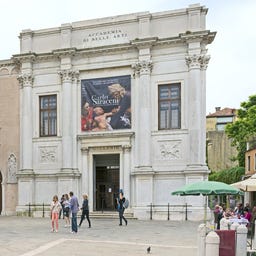
Gallerie Dell’ Accademia houses an impressive collection of Venetian art from the 14th to the 18th century, featuring works by Titian, Tintoretto, and Bellini. The museum’s carefully curated galleries offer a comprehensive look at Venice’s artistic evolution. Spend an afternoon here to deeply appreciate the grandeur of Venetian painting and sculpture.
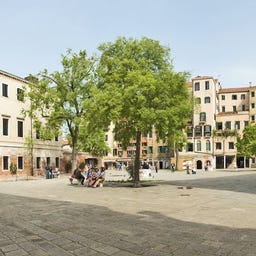
Founded in 1516, the Jewish ghetto in Venice was the first of its kind in Europe, symbolizing the enforced separation of the Jewish community from the rest of the city. The tall, densely packed buildings reflect the growing population that had to live within this confined space. Today, the ghetto is a vibrant center of Jewish culture. It boasts two synagogues, the Jewish Museum, and memorials dedicated to the victims of the Holocaust.
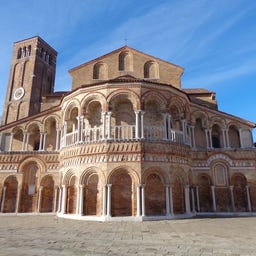
The Duomo di Murano impressively combines Romanesque and Byzantine architectural elements and has a rich history that dates back to the 7th century. In the magnificent basilica, originally dedicated to Santa Maria Assunta, you can find one of the most significant mosaic floors in Venice from 1141, as well as a splendid apse featuring the "Madonna Orante."

Majestically, the Basilica di San Giorgio Maggiore rises on its own island opposite St. Mark's Square, shaping the silhouette of Venice since the 16th century. This Renaissance building, constructed between 1566 and 1610 based on the designs of the famous architect Andrea Palladio, uniquely combines classical and cross-shaped floor plans.
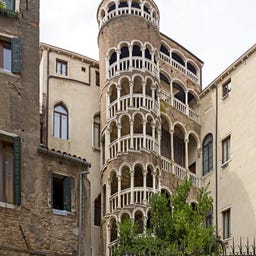
In the heart of the San Marco district stands the Palazzo Contarini del Bovolo, a fascinating example of Venetian late Gothic architecture from the 14th and 15th centuries. The architectural highlight of this former noble palace is its unique spiral staircase - called "bovolo" in the Venetian dialect - which gave the Contarini family their nickname.
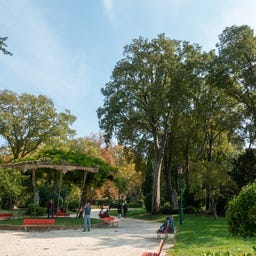
In the Giardini della Biennale, the largest green space in the historic center of Venice, you can expect a unique blend of park and art exhibition. Established in 1807 under Napoleon, the gardens became the venue for the world-famous Biennale in 1894 and have since housed an impressive collection of national art pavilions from the 20th century.
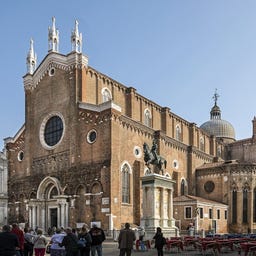
In the magnificent Gothic Basilica dei Santi Giovanni e Paolo, also known as the "Pantheon of Venice," you will find the tombs of numerous Venetian Doges and significant figures from the lagoon city. The basilica, whose construction began in the 13th century following a vision of Doge Jacopo Tiepolo and was completed only in 1430, impresses with its grand façade, a magnificent rose window, and a three-nave interior in the shape of a Latin cross.
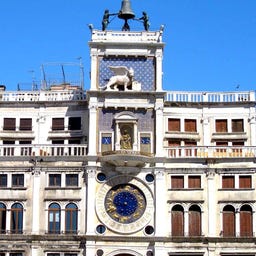
The Torre dell'Orologio at the northwest end of Piazza San Marco is one of the most impressive timepieces of the Renaissance: Since 1499, its grand clock has not only shown the time but also the phases of the moon and zodiac signs. The 24-meter-high tower clock is topped by two bronze "Mori" figures that strike the hours on a large bell—one two minutes before and the other two minutes after the hour. Through its majestic archway, which connects Piazza San Marco with the Merceria, one of Venice's most important passages leads you. On Epiphany and Ascension Day, you can witness a special spectacle here when mechanical figures of the Three Wise Men perform their procession.
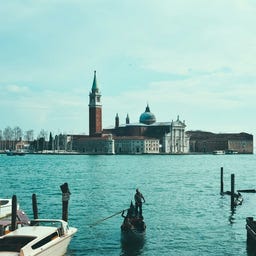
Directly opposite the famous St. Mark's Square, the small island of San Giorgio Maggiore rises, which already housed an early wooden church in the 8th/9th century. The current Basilica of San Giorgio Maggiore, a masterpiece by architect Andrea Palladio, significantly shapes the silhouette of Venice.
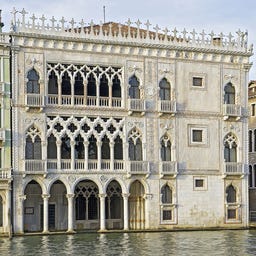
The Ca' d'Oro on the Grand Canal is one of the most magnificent examples of Venetian Gothic architecture, with its gold-adorned facade giving the palace its name. This impressive building was constructed in the 15th century by the Doge family Contarini and captivates with its asymmetrical facade featuring five large arches on the ground floor and ornate loggias on the upper levels.
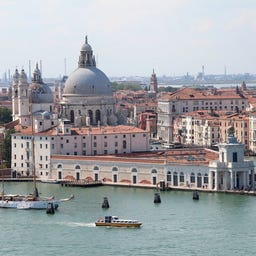
At the prominent point between the Canal Grande and the Giudecca Canal stands the historic Dogana da Mar, Venice's former customs house from the 17th century. The triangular building is topped by a distinctive tower, where two Atlas figures hold a golden globe.
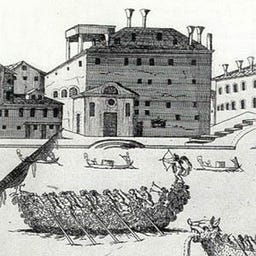
The Pio Ospedale della Pietà is one of Venice's most remarkable historical institutions, serving as an orphanage, convent, and conservatory since the 14th century. Here, famous composers like Antonio Vivaldi and Francesco Gasparini taught the "Daughters of the Choir" - young orphan girls who became known for their sacred music performances.
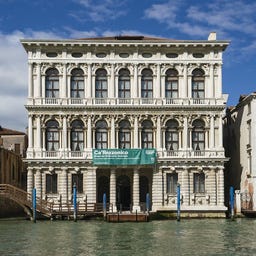
In the magnificent Ca' Rezzonico on the Canal Grande, you experience 18th-century Venetian culture in an authentic palace setting. Originally designed by Baldassarre Longhena in 1649, the Baroque palace was completed in 1758 by the wealthy Rezzonico family and now houses the Museum of 18th Century Venice.
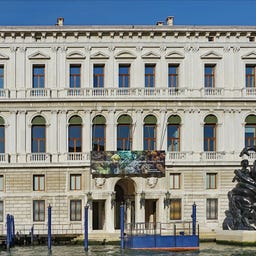
Overlooking the Canal Grande, the Palazzo Grassi represents the last grand palace residence of the Venetian Republic from the 18th century. Originally built for the Grassi family, this magnificent structure changed hands several times before being acquired by François Pinault in 2005. Today, the palace, with its neoclassical facade made of Istrian stone, houses one of the most significant collections of contemporary art in the world, featuring works by artists like Mark Rothko and Andy Warhol. The impressive main staircase adorned with frescoes by Michelangelo Morlaiter still reflects the original splendor of the building, while the modernized interiors now serve as exhibition space for rotating art shows.

In the Chiesa di San Pantalon, you'll find one of the most impressive ceiling paintings in Venice - a massive 443 square meter work by Giovanni Antonio Fumiani, created not as a fresco but on canvas. The church, first mentioned in the 12th century, was extensively renovated between 1668 and 1704 and houses significant artworks, including the last painting by Paolo Veronese from 1587.
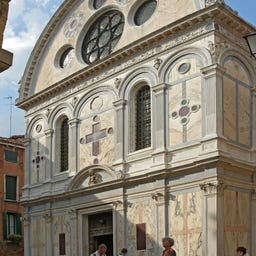
The Chiesa di Santa Maria dei Miracoli is one of the earliest examples of Renaissance architecture in Venice, captivating you with its intricately decorated facade made of multicolored marble. The church was built between 1481 and 1489 by Pietro Lombardo and his sons, inspired by a miraculous image of Mary that prompted the construction.
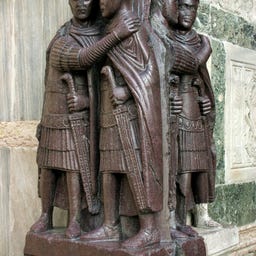
At the corner of the Treasure of San Marco in Venice, you will find a fascinating group of sculptures from the early 4th century: four life-sized figures made of red Egyptian porphyry representing the Tetrarchs of the Roman Empire.
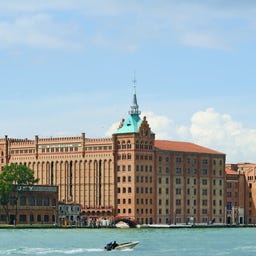
At the western end of the Giudecca, the Molino Stucky rises majestically, an impressive testament to late 19th-century industrial architecture. This imposing brick building, with its neo-Gothic facade and distinctive clock, was constructed between 1884 and 1895 by Giovanni Stucky, a Swiss entrepreneur, as a grain mill and employed 1,500 workers at its peak.
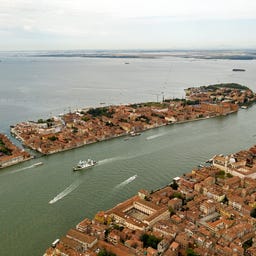
South of the historic center of Venice lies Giudecca, an archipelago made up of eight connected islands that stands out for its relaxed atmosphere and significantly fewer tourists compared to the rest of the lagoon city. The most notable buildings are the Basilica del Redentore, designed by Andrea Palladio in the 16th century, and the impressive Molino Stucky, a neo-Gothic structure that now serves as a hotel and conference center.
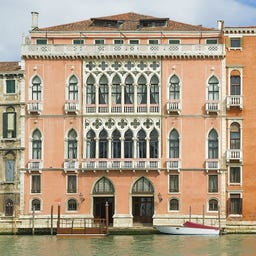
The magnificent Palazzo Pisani Moretta has been standing since the 15th century on the Canal Grande in the heart of the San Polo district, captivating visitors with its Venetian Gothic architecture featuring Renaissance elements.
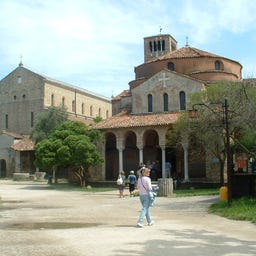
The Basilica di Santa Maria Assunta on the lagoon island of Torcello is one of the most significant examples of early Christian architecture in the region, originally built in 639 as a bishop's seat. In the three-nave church, you'll find impressive Byzantine mosaics, including a massive Last Judgment on the entrance wall and a central apse featuring the Madonna Odigitria.
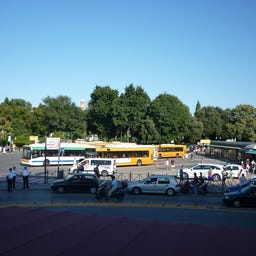
As the most important transport hub of Venice, Piazzale Roma has connected the historic center with the mainland since 1933. Here, you will find not only the once largest parking garage in Europe in a rationalist style but also all the essential means of transport: buses, taxis, water buses, and since 2008, a direct pedestrian connection to the Santa Lucia train station via the Ponte della Costituzione.

The church of Il Redentore on the island of Giudecca was designed by Andrea Palladio to give thanks for the end of the devastating plague of 1575-1577. Its facade, reminiscent of classical temples like the Pantheon, is both grand and inviting. Inside, the church impresses with a harmonious blend of white stucco and gray stone, adorned with masterpieces by renowned artists such as Veronese and Tintoretto. Every year, the Festa del Redentore is celebrated with a spectacular fireworks display and a procession across a temporary bridge.
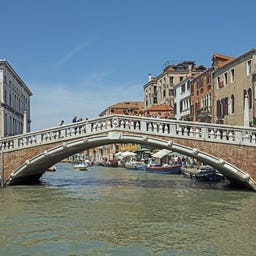
The Ponte delle Guglie in the Cannaregio district is the only bridge in Venice adorned with characteristic stone spikes - the "guglie" that give it its name - at the bases of its railings. Originally built as a wooden structure in 1285, it was replaced by the current stone bridge at the end of the 16th century, and its distinctive spikes were added during a renovation in 1823.
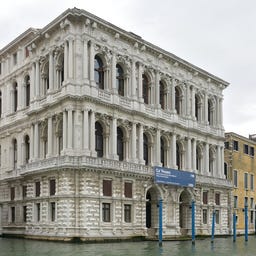
The impressive Ca' Pesaro Palace on the Grand Canal is one of the most significant Baroque buildings in Venice and today houses the International Gallery of Modern Art as well as the Museum of Oriental Art. The magnificent structure was started in 1652 by Baldassare Longhena for the wealthy Pesaro family and completed in 1710.
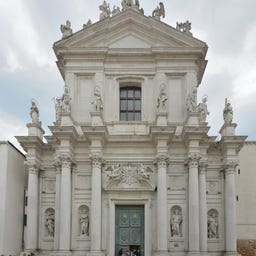
The magnificent Chiesa dei Gesuiti in the Cannaregio district has a rich history that dates back to the 12th century. The current Baroque structure was built between 1715 and 1729 by Domenico Rossi and impresses with its grand facade featuring two orders of columns.

The Chiesa di Santa Maria del Giglio, built in the 10th century by the Iubanico family, is one of the most remarkable Baroque churches in Venice. The magnificent facade designed by Giuseppe Sardi in the 17th century sparked controversy, as it celebrates worldly power rather than religious themes.
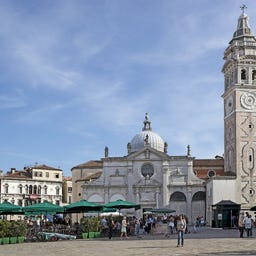
The Chiesa di Santa Maria Formosa is one of the most historically significant churches in Venice, located on the square of the same name, one of the largest squares in the lagoon city. According to legend, it was founded in 639 by San Magno after a vision of the Virgin Mary, before Mauro Codussi completely rebuilt it at the end of the 15th century.
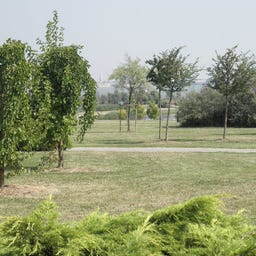
Parco San Giuliano, with its 378 hectares, is one of the largest city parks in Venice and offers you an impressive view of the Venetian lagoon. What once served as an industrial dump was transformed into a vast green space in 2004 after extensive renovation, and today it is an important refuge for the wildlife and plant life of the lagoon.
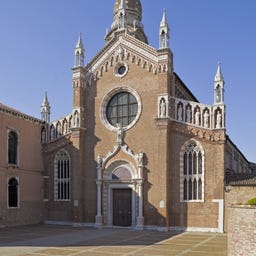
In the remote northern lagoon of Venice, you will find one of the most atmospheric churches in the city, the Chiesa della Madonna dell'Orto, built in the 14th century by the Humiliati brotherhood. This Gothic church, named after a revered statue of the Madonna known for its miracles, not only houses ten significant paintings by the Venetian master Jacopo Tintoretto, who is also buried here. With its distinctive bell tower from the early 16th century, traditional terracotta floor, and beautifully restored wooden ceiling, it offers you an authentic glimpse into Venice's religious heritage.
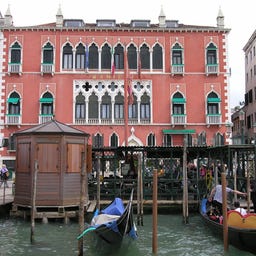
The magnificent Palazzo Dandolo on the banks of the Riva degli Schiavoni was built in the 14th century for the eponymous Venetian family and now houses the legendary Hotel Danieli. With its Gothic facade made of Istrian stone and the impressive courtyard featuring a golden staircase and Moorish arches, it is one of the most significant palaces in the Castello district near St. Mark's Square.
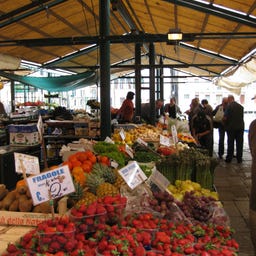
The "Rialto Market" was the most important trading place in Venice. The name Rialto is derived from the Italian "rivo alto" = "the high bank." It was one of the first places in the lagoon to be settled. From its founding, trade and traffic concentrated around the Rialto.
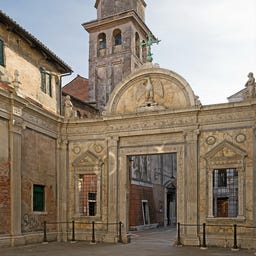
The Scuola Grande di San Giovanni Evangelista is one of the oldest and most significant brotherhoods in Venice, with a history dating back to 1261. In the impressive building, which combines Gothic, Renaissance, and Baroque elements, you will find not only the monumental staircase by Mauro Codussi but also valuable paintings by Bellini, Carpaccio, and Titian. However, the most precious piece is a relic of the True Cross, which was gifted to the brotherhood in 1369 and is still venerated today. The magnificent chapter hall was redesigned in the 18th century by Giorgio Massari and impresses with its high ceiling and intricate marble floor.
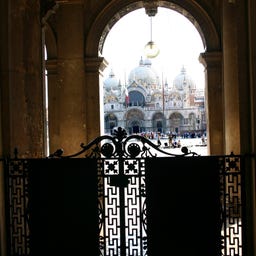
In the magnificent Ala Napoleonica at St. Mark's Square, you will discover one of Venice's most important cultural institutions: The museum, which opened in 1836, preserves the legacy of the Venetian nobleman Teodoro Correr, who bequeathed his extensive collection to the city.
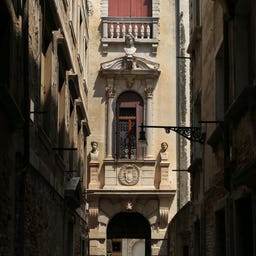
In the Venetian district of Castello, you will find the Palazzo Grimani di Santa Maria Formosa, an impressive testament to the blend of medieval and classical architecture. Once owned by the powerful Grimani family, the palace was extensively remodeled in the 16th century and now features magnificent rooms adorned with frescoes by Francesco Salviati and stucco work by Giovanni da Udine.

The Chiesa di San Giorgio dei Greci is one of the oldest Orthodox churches outside of Greece, built between 1536 and 1577 by the Greek community in Venice. The building, designed in the late Renaissance style by Sante Lombardo, features impressive frescoes by Giovanni di Cipro and a precious icon of the Virgin Mary, which was brought here after the fall of Constantinople in 1453.
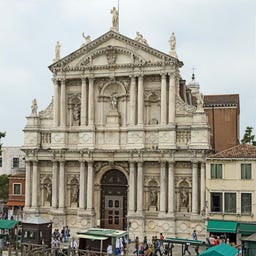
Right next to the Santa Lucia train station, you will find the Chiesa degli Scalzi, one of the most magnificent Baroque churches in Venice. Designed by Baldassare Longhena and consecrated in 1705, the building impresses with its grand facade featuring double rows of columns, crafted by Giuseppe Sardi in the late Venetian Baroque style.
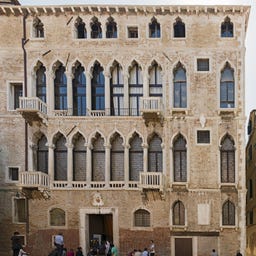
Built in the late 15th century by the noble Pesaro family, the Palazzo Pesaro Orfei is one of the largest Gothic palaces in Venice, located away from the Grand Canal. With its three distinctive facades and reception halls measuring 45 meters each, it impresses with its harmonious architecture and is considered a prime example of Venetian Gothic style.

In the Chiesa di San Geremia in the Cannaregio district, over 900 years of Venetian church history blend with significant sacred art. The building, originally constructed in the 11th century, has undergone several transformations until Carlo Corbellini designed the current neoclassical church, which was completed in 1861.
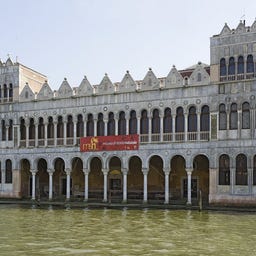
In the historic Fondaco dei Turchi right by the Canal Grande, you will find the Natural History Museum of Venice, which was established in 1923. Since its renaming in honor of Giancarlo Ligabue in 2019, the museum features 16 newly designed exhibition rooms and a modern entrance area.
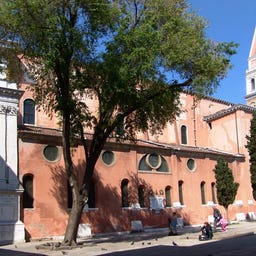
In the Chiesa di San Francesco della Vigna, you will find one of the most significant Renaissance churches in Venice, whose impressive facade was completed by Andrea Palladio in 1564. Originally designed by Jacopo Sansovino, the church features a Latin cross layout with a wide nave and five side chapels on each side, while precious artworks like the "Sacra Conversazione" by Giovanni Bellini adorn the interior.
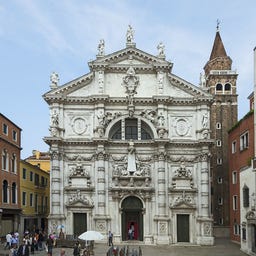
The Chiesa di San Moisè in the heart of the San Marco district is one of the oldest churches in Venice, with a history dating back to the late 8th century. The current Baroque facade, designed by Alessandro Tremignon in 1668 and funded by the Fini brothers, was criticized by contemporaries like John Ruskin for its overly ornate style.
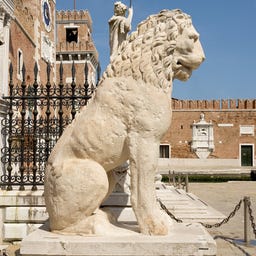
In front of the Arsenale in Venice stands an impressive marble statue that tells a captivating story: the Leone del Pireo, a lion about 3 meters tall from the 1st/2nd century, was originally erected in the ancient harbor of Athens.
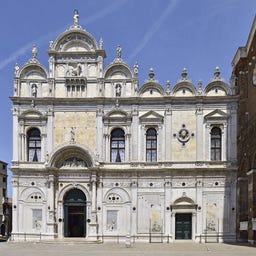
The magnificent Scuola Grande di San Marco at Campo Santi Giovanni e Paolo combines Venetian Gothic and Renaissance styles to create one of the most impressive facades in the city. Originally built in the 13th century as the seat of an important religious brotherhood, the building took on its current form after a devastating fire in 1485, featuring intricate reliefs by sculptors Pietro and Tullio Lombardo.
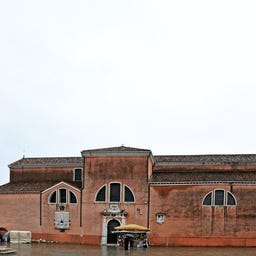
On the picturesque lagoon island of Burano, you will find the Chiesa di San Martino, a 16th-century church that is easily recognizable by its distinctly leaning bell tower. The 53-meter-high campanile, built between 1703 and 1714, has long become the island's landmark.
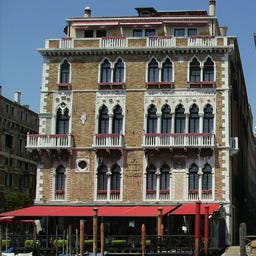
In the heart of the San Marco district, the Hotel Bauer stands proudly by the Canal Grande, just a few steps away from the famous Piazza San Marco. Originally known as the Grand Hotel d'Italie Bauer-Grünwald, this luxury hotel has a rich history dating back to the 12th century, when a tower belonging to the Barozzi family stood here. In its current form, the 5-star hotel combines an 18th-century Venetian palace with an extension from the 1940s and features 210 rooms, including 19 in the Casa Nova. From the rooftop terrace "Settimo Cielo," one of the highest in Venice, you can enjoy a breathtaking view of the lagoon city.

On the island of Giudecca, you will find the Casa dei Tre Oci, a fascinating example of Venetian Neo-Gothic architecture from the early 20th century. Designed by Mario de Maria as a residence between 1912 and 1913, the building is distinguished by its three prominent pointed arch windows, known as "òci" in Venetian, which are dedicated to his surviving family members.

The oldest still existing theater in Venice was opened in 1622 as Teatro Vendramin and is just a few steps away from the famous Rialto Bridge. It received its current name in 1875 in honor of the significant Venetian playwright Carlo Goldoni, who revitalized the theater in the mid-18th century.

Just five kilometers from the historic center of Venice, you will find the impressive 19th-century fortress of Forte Marghera. Built by the Austrians, this fortress features a distinctive pentagonal layout and double moat, and it was once part of the Venetian defense system, changing hands several times between French and Austrian control.
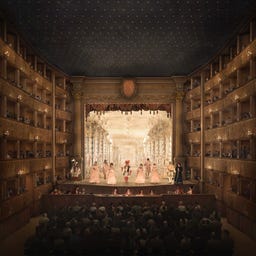
At the Teatro San Cassiano, you experience a fascinating piece of opera history: Here, in 1637, the first public opera house in Venice opened its doors, making this art form, previously reserved for the nobility, accessible to paying audiences for the first time. The theater, built by the Tron family near the Rialto Bridge, became the prototype of the "Italian theater" and influenced theater architecture worldwide.
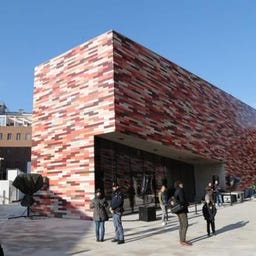
In the modern Museo M9 in Mestre, a district of Venice, you can experience Italian history of the 20th century through an impressive multimedia exhibition featuring 6,000 photos, 820 films, and 400 audio files.
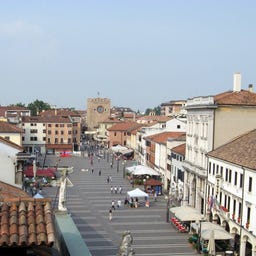
On the historic Piazza Erminio Ferretto, the main square of Mestre, you can feel the centuries-old history of the medieval village center. The pedestrian square is surrounded by significant buildings like the Duomo di San Lorenzo, the Palazzo Da Re with its distinctive arcades, and the historic clock tower from the 12th century. In the center of the square, which was called Piazza Maggiore until 1945 and is named after the partisan Erminio Ferretto, who was murdered by the Nazis, you will find a modern bronze sculpture called "Nudo." Today, the square is a vibrant meeting place where markets and events are regularly held.
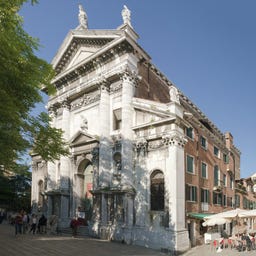
The Chiesa di San Vidal, located near the Accademia Bridge in the San Marco district, was founded in 1084 under Doge Vitale Falier and extensively remodeled in the Palladian style at the end of the 17th century. In its single-nave interior, you can find remarkable artworks by Venetian masters, including Vittore Carpaccio's "Gloria di san Vitale" at the main altar and works by Sebastiano Ricci.
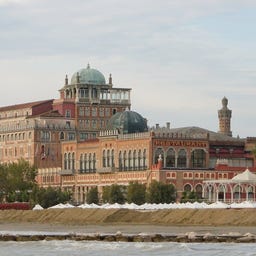
On the beachfront promenade of Lido di Venezia, the Hotel Excelsior, opened in 1908, stands as a fascinating example of Venetian architecture with Arabic and Byzantine influences. Designed by architect Giovanni Sardi, this magnificent building captivates with its golden mosaics, intricate arches, and striking domes, while inside, you can admire the exquisite glassworks of artist Umberto Bellotto.
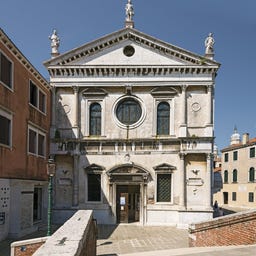
In the Chiesa di San Sebastiano in the Dorsoduro district, you will find one of the most significant works of art by the Renaissance painter Paolo Veronese, who is also buried here. The current church, built between 1506 and 1548, impresses with its classicist façade featuring a distinctive triangular pediment and three statues of saints.
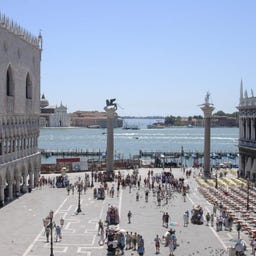
The two majestic marble columns at the entrance of Piazza San Marco have served as the maritime gateway to Venice since the 13th century, topped by the statues of the city's patron saints - a bronze lion of St. Mark and the dragon-slaying St. Theodore.
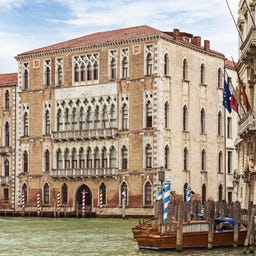
In the magnificent Gothic palace Ca' Foscari on the Canal Grande, you will find one of the most important universities in Venice, which was founded in 1868 by Luigi Luzzatti, Edoardo Deodati, and Francesco Ferrara as a business school. The impressive Aula Baratto, designed by architect Carlo Scarpa, is adorned with striking frescoes by artists Mario Sironi and Mario Deluigi from the 20th century.
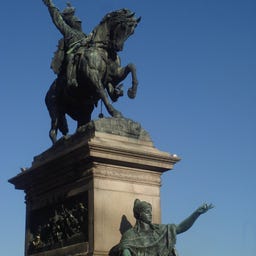
At the Riva degli Schiavoni, you can see the impressive equestrian statue of Vittorio Emanuele II, the first king of united Italy. Inaugurated in 1887, the monument depicts the monarch on horseback with his sword drawn, surrounded by an intricately designed bronze fence featuring military motifs.
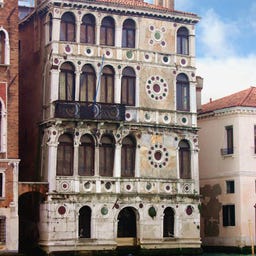
On the Canal Grande, the narrow Palazzo Ca' Dario rises, a fascinating example of Venetian architecture from the 15th century with its characteristically asymmetrical facade made of Istrian stone and colored marble. Commissioned in 1478 by Giovanni Dario, a wealthy merchant of the Republic of Venice, the palace has been accompanied by numerous tragic events over the centuries, earning it the reputation of a cursed house.
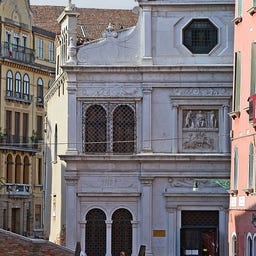
At the Scuola di San Giorgio degli Schiavoni, you will find one of the best-preserved confraternity schools in Venice, which has been continuously active since its founding in 1451. The school, established in the early 16th century by Giovanni De Zan, originally served as a spiritual and social hub for the Dalmatian community.
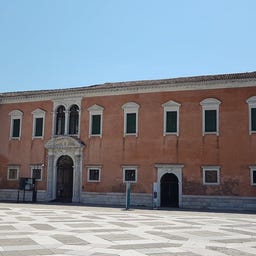
On the island of San Giorgio Maggiore, right across from St. Mark's Square, you will find the Fondazione Giorgio Cini - one of the most significant private cultural institutions in Italy from the 20th century. Founded in 1951 by Count Vittorio Cini in memory of his deceased son, the foundation not only houses an impressive library with over 150,000 volumes but also the Labirinto Borges, a fascinating garden labyrinth dedicated to the writer Jorge Luis Borges, which opened in 2011.
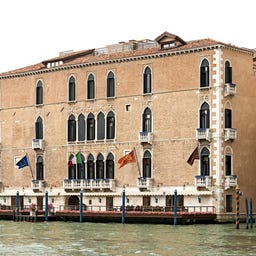
On the banks of the Canal Grande, the majestic Palazzo Pisani Gritti rises, an impressive example of Venetian architecture from the 14th century. Originally a three-story building, it was remodeled in the 16th century, acquiring its characteristic Gothic facade with elegant pointed arches and symmetrically arranged windows.
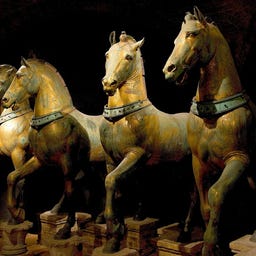
The famous bronze horses of Basilica San Marco are among the most significant ancient metalworks that have survived to this day. The nearly life-sized sculptures, which were once part of a quadriga, stood in the Hippodrome of Constantinople before being brought to Venice as war booty in 1204 under Doge Enrico Dandolo.
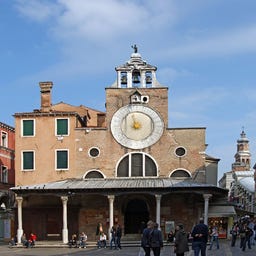
The Chiesa di San Giacomo di Rialto, affectionately called "San Giacométo" by locals, is considered the oldest church in Venice and, according to tradition, was consecrated on March 25, 421. Located right next to the famous Rialto Bridge, it shapes the skyline of the bustling trading district with its distinctive Gothic porch and the monumental clock from 1410.
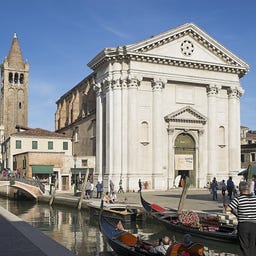
The Chiesa di San Barnaba in the Venetian district of Dorsoduro has a history that spans almost 1100 years, with its origins dating back to the 9th century. The elegant neoclassical facade, featuring Corinthian columns, was added to the church in 1749 during a major renovation by Lorenzo Boschetti.
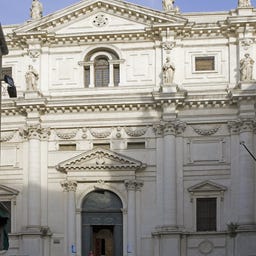
Founded in the 7th century, the Chiesa di San Salvador is one of the most significant Renaissance churches in the heart of Venice and houses the relics of Saint Theodore, the city's first patron saint. The magnificent structure, built starting in 1507, captivates with its six Byzantine-style domes and impressive artworks, including an altarpiece of the "Transfiguration of Christ" by Titian. The facade, designed by Giuseppe Sardi, was completed in 1649 and is adorned with intricate statues, while inside, visitors are greeted by a splendid marble floor and the main altar featuring a statue of the risen Christ.

The Chiesa di San Rocco in the heart of the San Polo district is more than just a church - it was built in the late 15th century as a spiritual center for plague victims. In its simple single-nave interior, you can find impressive paintings by Tintoretto as well as statues of Venetian saints. The current facade dates back to the 18th century and was completed by Bernardino Maccaruzzi after an initial attempt had to be abandoned due to costs. Together with the adjacent Scuola Grande di San Rocco, the church forms an important complex that is still used as a religious site today.
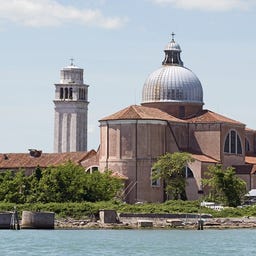
The Basilica di San Pietro di Castello stands as a quiet witness to Venetian history in the eastern district of Castello, not far from the famous Arsenale. Until Napoleon Bonaparte replaced it with the Basilica di San Marco in 1807, it served as the cathedral of the Patriarchate of Venice for over 350 years.

In the heart of the San Marco district, just a few steps from the Accademia Bridge, lies one of the largest squares in Venice: Campo Santo Stefano. This square, lined with magnificent palaces, is dominated by the impressive Church of Santo Stefano and the Church of San Vidal.
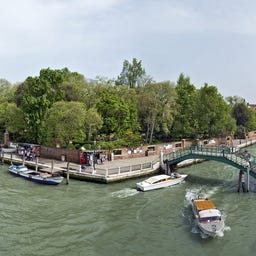
In the heart of the historic Santa Croce district, you will find the Giardini Papadopoli, a green oasis of 7,500 m², created in the 19th century by Francesco Bagnara for Countess Teresa Mosconi. The park combines English landscape style with geometric flower beds and hosts a variety of exotic plants under a dense canopy of trees.
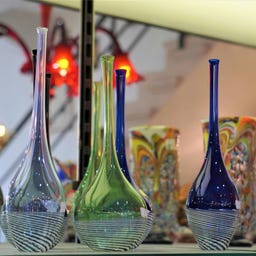
The Murano Glass Museum on the island of Murano showcases an impressive collection that chronicles the history of glassmaking from ancient times to the present day. Visitors can admire exquisite glassworks from various eras, including delicate pieces from the Renaissance and innovative modern creations. This tranquil museum, away from the usual tourist crowds, offers fascinating insights into Venetian glassblowing. Afterwards, one appreciates the beautiful glass creations in the souvenir and craft shops even more.
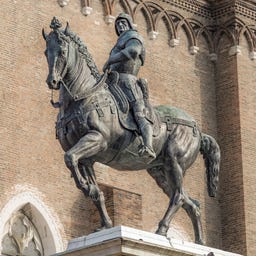
On the Campo San Zanipolo stands one of the most significant equestrian monuments of the Renaissance: the bronze statue of the condottiere Bartolomeo Colleoni, created by Andrea del Verrocchio in the late 15th century. At nearly 4 meters tall, it was only the third equestrian statue of the Renaissance after Donatello's Gattamelata and represents a technical masterpiece - for the first time, a horse sculpture was stabilized on just three legs. The dynamic pose of the commander and the powerful execution clearly distinguish this work from earlier, more static equestrian monuments. Verrocchio passed away in 1488 before its completion, so the Venetian artist Alessandro Leopardi finished the monumental piece.

On the foundations of Marco Polo's former residence stands one of the most traditional theaters in Venice, which opened in 1678 as Teatro San Giovanni Grisostomo. In the 17th and 18th centuries, it became the most important and luxurious opera stage in the lagoon city, where composers like Georg Friedrich Händel and Alessandro Scarlatti showcased their works. After a tumultuous history and several restorations, the building, now known as Teatro Malibran, serves as a second venue for Teatro La Fenice and impresses with its elegant auditorium featuring five tiers of thirty boxes each.
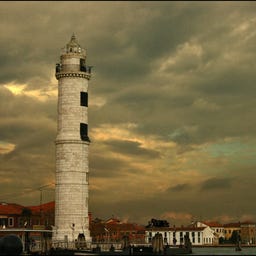
The distinctive lighthouse of Murano, built from Istrian stone since 1934, replaces one of the oldest navigation points in the Venetian lagoon - a wooden tower with a beacon stood here even during the time of the Republic of Venice. With its characteristic glass dome and two intricate Madonna reliefs, the Faro di Murano combines Venetian craftsmanship with maritime functionality.
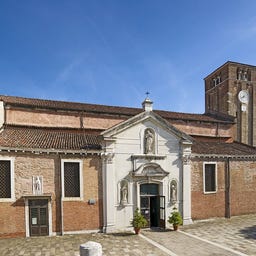
In the charming Dorsoduro district of Venice, you will discover the Chiesa di San Nicolò dei Mendicoli, one of the oldest churches in the lagoon city, with its origins dating back to the 7th century. The striking Venetian-Byzantine bell tower from the 13th century towers over the three-nave Romanesque basilica, which underwent extensive restoration after devastating flood damage in the 1970s.
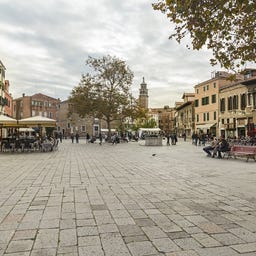
On Campo Santa Margherita, authentic Venetian life thrives - thanks to the nearby universities, you'll find a particularly vibrant crowd of young people here. The spacious square took on its current appearance in the late 19th century, when the Austro-Hungarian authorities filled in some canals for hygiene reasons.
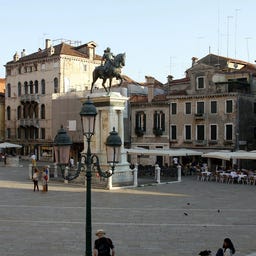
In one of the largest squares in Venice, Campo Santi Giovanni e Paolo in the Castello district, you will find an impressive ensemble of Venetian architecture. The majestic Basilica Santi Giovanni e Paolo dominates the square, alongside which is the historic entrance to the city hospital.
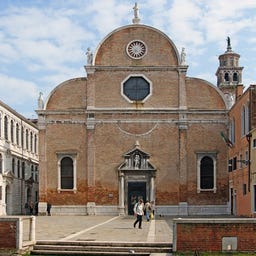
The Chiesa di Santa Maria dei Carmini in the Dorsoduro district beautifully combines Gothic and Renaissance elements into a harmonious whole. The current structure was built starting in 1286 on the foundations of an older church from the 12th century and was consecrated in 1348.
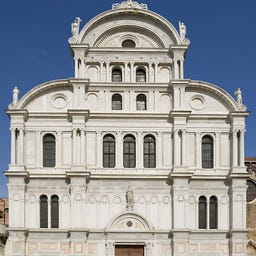
Just a few steps from St. Mark's Square, you will find the Chiesa di San Zaccaria, one of the most significant Renaissance churches in Venice. Originally built in the 9th century and rebuilt after a devastating fire in the 15th century, this church not only houses the remains of Saint Zacharias but also an impressive collection of Venetian masterpieces, including Giovanni Bellini's famous "Sacra Conversazione" from 1505.
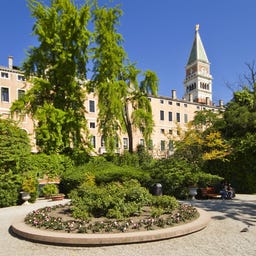
Right next to St. Mark's Square, you'll find the Giardini Reali - a green oasis of 5,500 m² that Napoleon Bonaparte had created in 1806 as part of his urban reforms. Originally reserved for the royal palace, the garden was enhanced with neoclassical café architecture and an impressive iron pergola before finally opening to the public in 1920.
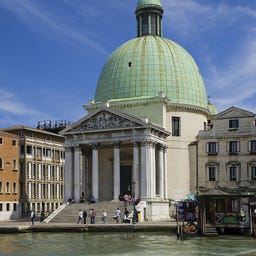
Directly across from the Santa Lucia train station, you will find the impressive Chiesa di San Simeon Piccolo rising by the Canal Grande, with its distinctive dome reminiscent of the Roman Pantheon. Originally founded in the 9th century, the church was completely rebuilt in a neoclassical style between 1718 and 1738 due to signs of decay. In the stunning crypt, you can see numerous historical graves as well as frescoes depicting scenes from the Old Testament and the Via Crucis. Today, the church is managed by the Priestly Fraternity of St. Peter and is known for its traditional Roman Catholic services.
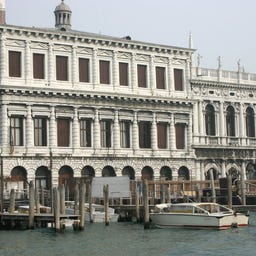
The former mint of the Republic of Venice impresses with its massive architecture made of Istrian stone, designed by the star architect Jacopo Sansovino to be fireproof between 1537 and 1545. At its peak in the 15th century, up to two million coins were minted here each year, before production ceased in 1870.
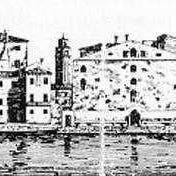
The Teatro Sant'Angelo, opened in 1677 near the Rialto Bridge, was one of the most important theaters in baroque Venice. In the building designed by Francesco Santurini, which featured 136 boxes and an orchestra pit, Antonio Vivaldi achieved great success—twelve of his operas premiered here. Between 1748 and 1753, the famous playwright Carlo Goldoni also staged many of his works in this theater. It competed with the Teatro San Moisè until the late 18th century, but was closed in 1804 during the French occupation. Today, the Palazzo Barocci, which houses a hotel, stands in its place.
